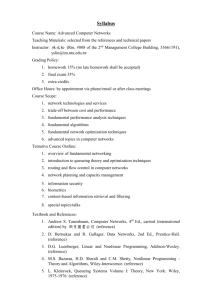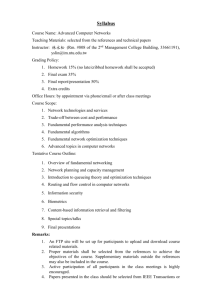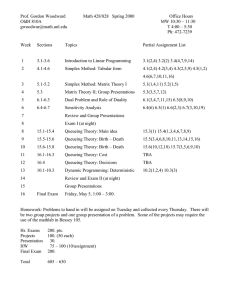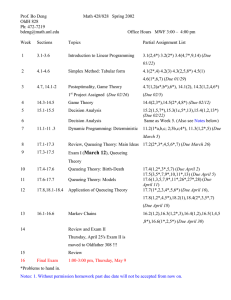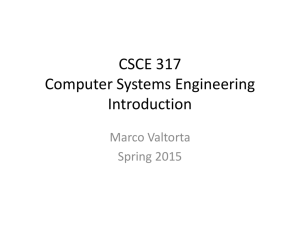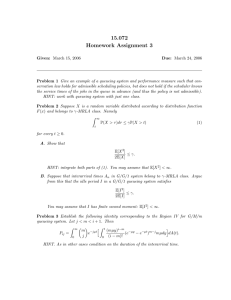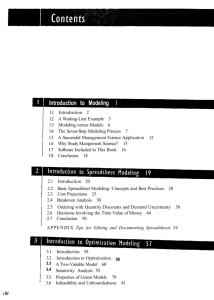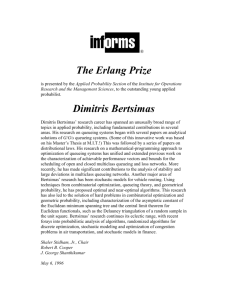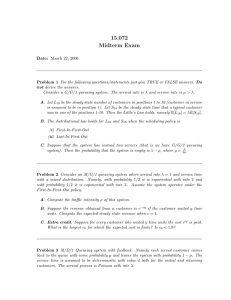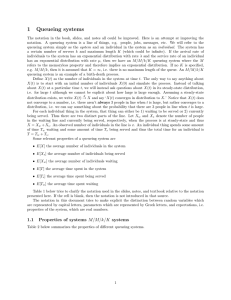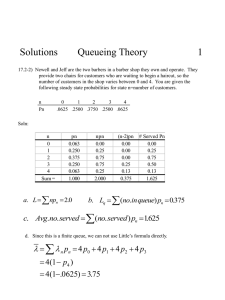Master Syllabus
advertisement
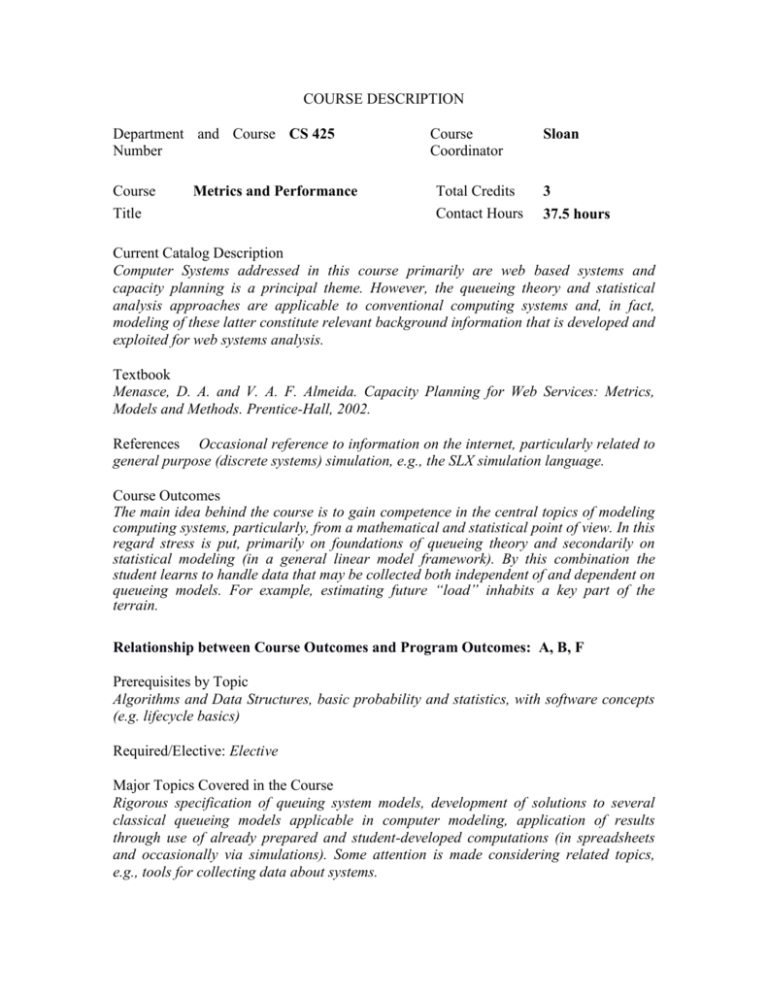
COURSE DESCRIPTION Department and Course CS 425 Number Course Title Metrics and Performance Course Coordinator Total Credits Contact Hours Sloan 3 37.5 hours Current Catalog Description Computer Systems addressed in this course primarily are web based systems and capacity planning is a principal theme. However, the queueing theory and statistical analysis approaches are applicable to conventional computing systems and, in fact, modeling of these latter constitute relevant background information that is developed and exploited for web systems analysis. Textbook Menasce, D. A. and V. A. F. Almeida. Capacity Planning for Web Services: Metrics, Models and Methods. Prentice-Hall, 2002. References Occasional reference to information on the internet, particularly related to general purpose (discrete systems) simulation, e.g., the SLX simulation language. Course Outcomes The main idea behind the course is to gain competence in the central topics of modeling computing systems, particularly, from a mathematical and statistical point of view. In this regard stress is put, primarily on foundations of queueing theory and secondarily on statistical modeling (in a general linear model framework). By this combination the student learns to handle data that may be collected both independent of and dependent on queueing models. For example, estimating future “load” inhabits a key part of the terrain. Relationship between Course Outcomes and Program Outcomes: A, B, F Prerequisites by Topic Algorithms and Data Structures, basic probability and statistics, with software concepts (e.g. lifecycle basics) Required/Elective: Elective Major Topics Covered in the Course Rigorous specification of queuing system models, development of solutions to several classical queueing models applicable in computer modeling, application of results through use of already prepared and student-developed computations (in spreadsheets and occasionally via simulations). Some attention is made considering related topics, e.g., tools for collecting data about systems. Laboratory projects (specify number of weeks on each) Lab work consists primarily in project work, with formal write-ups and oral presentations. Sometimes smaller homework problems are introduced to make specific points. Criterion 3 Student Outcomes Outcome a An ability to apply knowledge of computing and mathematics appropriate to the discipline X b X d An ability to analyze a problem, and identify and define the computing requirements appropriate to its solution An ability to design, implement, and evaluate a computer-based system, process, component, or program to meet desired needs An ability to function effectively on teams to accomplish a common goal e An understanding of professional, ethical, legal, security and social issues and responsibilities f An ability to communicate effectively with a range of audiences g h An ability to analyze the local and global impact of computing on individuals, organizations, and society Recognition of the need for and an ability to engage in continuing professional development i An ability to use current techniques, skills, and tools necessary for computing practice j An ability to apply mathematical foundations, algorithmic principles, and computer science theory in the modeling and design of computer-based systems in a way that demonstrates comprehension of the tradeoffs involved in design choices. An ability to apply design and development principles in the construction of software systems of varying complexity. c k Oral and Written Communications Social and Ethical Issues X
